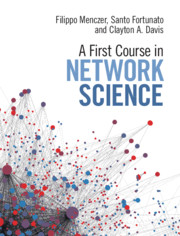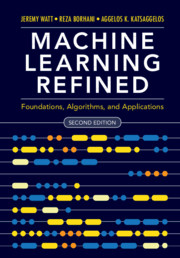Refine search
Actions for selected content:
48290 results in Computer Science
ROB volume 38 issue 3 Cover and Back matter
-
- Article
-
- You have access
- Export citation

Data Mining and Machine Learning
- Fundamental Concepts and Algorithms
-
- Published online:
- 07 February 2020
- Print publication:
- 30 January 2020
-
- Textbook
- Export citation
Controlling wireless power transfer by tuning and detuning resonance of telemetric devices for rodents
- Part of
-
- Journal:
- Wireless Power Transfer / Volume 7 / Issue 1 / March 2020
- Published online by Cambridge University Press:
- 07 February 2020, pp. 19-32
- Print publication:
- March 2020
-
- Article
- Export citation
A cubical Squier’s theorem
-
- Journal:
- Mathematical Structures in Computer Science / Volume 30 / Issue 2 / February 2020
- Published online by Cambridge University Press:
- 06 February 2020, pp. 159-172
-
- Article
- Export citation
Miniaturized implantable power transmission system for biomedical wireless applications
- Part of
-
- Journal:
- Wireless Power Transfer / Volume 7 / Issue 1 / March 2020
- Published online by Cambridge University Press:
- 06 February 2020, pp. 1-9
- Print publication:
- March 2020
-
- Article
-
- You have access
- Open access
- HTML
- Export citation
A review and comparison of ontology-based approaches to robot autonomy – ADDENDUM
-
- Journal:
- The Knowledge Engineering Review / Volume 35 / 2020
- Published online by Cambridge University Press:
- 06 February 2020, e5
-
- Article
- Export citation

A First Course in Network Science
-
- Published online:
- 05 February 2020
- Print publication:
- 23 January 2020
-
- Textbook
- Export citation

Machine Learning Refined
- Foundations, Algorithms, and Applications
-
- Published online:
- 05 February 2020
- Print publication:
- 09 January 2020
-
- Textbook
- Export citation
On subgraphs of C2k-free graphs and a problem of Kühn and Osthus
- Part of
-
- Journal:
- Combinatorics, Probability and Computing / Volume 29 / Issue 3 / May 2020
- Published online by Cambridge University Press:
- 04 February 2020, pp. 436-454
-
- Article
- Export citation
A note on the Brown–Erdős–Sós conjecture in groups
- Part of
-
- Journal:
- Combinatorics, Probability and Computing / Volume 29 / Issue 4 / July 2020
- Published online by Cambridge University Press:
- 03 February 2020, pp. 633-640
-
- Article
- Export citation

A Hands-On Introduction to Data Science
-
- Published online:
- 01 February 2020
- Print publication:
- 02 April 2020
-
- Textbook
- Export citation
Ontology engineering methodologies for the evolution of living and reused ontologies: status, trends, findings and recommendations
-
- Journal:
- The Knowledge Engineering Review / Volume 35 / 2020
- Published online by Cambridge University Press:
- 31 January 2020, e4
-
- Article
-
- You have access
- Open access
- HTML
- Export citation
Comparing the measurement of different social networks: Peer nominations, online communication, and proximity data
-
- Journal:
- Network Science / Volume 8 / Issue 1 / March 2020
- Published online by Cambridge University Press:
- 31 January 2020, pp. 62-78
-
- Article
-
- You have access
- Open access
- Export citation








